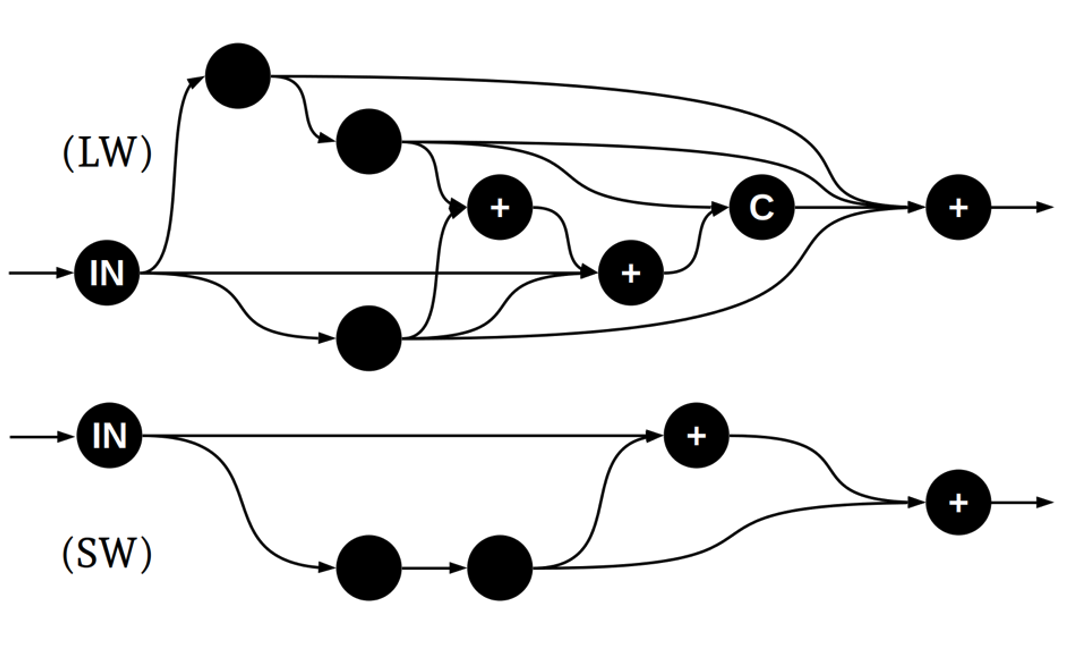Emulating Interactions Between Atmospheric Particles and Light with Machine Learning
Randomly constructed neural networks can learn how to represent light interacting with atmospheric aerosols accurately at a low computational cost and improve climate modeling capabilities.
The Science
Accurately modeling how light interacts with small atmospheric particles, like dust and smoke, is critical in climate and weather models because of their impact on the radiative budget. However, the relevant small-scale physics cannot be directly computed in a model large enough to represent the entire atmosphere. Researchers developed a neural network that can be used to accurately emulate this physics with a relatively small computational expense. By exploring a range of different neural networks, researchers identified an option that provides an optimal balance between accuracy and complexity.
The Impact
Atmospheric aerosols play a critical role in the Earth system, partly through their direct interaction with light passing through the atmosphere. This work developed a new method to represent the key physics underlying aerosol–light interactions more accurately in Earth system models. It also lays the groundwork for including physical processes in models that are impractical to represent using conventional approaches. Ultimately, this work will improve estimates of direct aerosol radiative effects in climate projections, which is currently a major source of uncertainty.
Summary
Accurately representing the interaction between light and atmospheric aerosols is a crucial component of modern climate models. However, directly computing the radiative properties of aerosol populations is far too computationally expensive to perform during climate simulations, so optical properties are typically approximated using a simple statistical model. This work develops artificial neural networks (ANNs) capable of replacing the current aerosol optics parameterization used in the Energy Exascale Earth System Model (E3SM).
A large training dataset is generated by using Mie code (Sumlin et al., 2018) to directly compute the optical properties of a range of atmospheric aerosol populations given a large variety of particle sizes, wavelengths, and refractive indices. Optimal neural architectures for shortwave and longwave bands are identified by evaluating ANNs with randomly generated wirings (Fig. 1). Randomly generated deep neural networks that include many skip connections can consistently outperform conventional multilayer-perceptron-style architectures with comparable parameter counts. Finally, the ANN-based parameterization produces significantly more accurate bulk aerosol optical properties than the current parameterization when compared with direct Mie calculations using mean absolute error. The success of this approach makes possible the future inclusion of much more sophisticated representations of aerosol optics in climate models that cannot be captured by extension of the existing parameterization scheme and demonstrates the potential of random-wiring-based neural architecture search in future applications in the Earth sciences.
This style of neural architecture search has substantial potential to improve the development of representations of other physical processes in climate models. The network developed here will significantly improve the accuracy of aerosol radiative effects modeled by E3SM.
The research used high-performance computing resources from PNNL Research Computing and the National Energy Research Scientific Computing Center.
Publication
- Geiss, Andrew, Po-Lun Ma, Balwinder Singh, and Joseph C. Hardin. 2023. “Emulating Aerosol Optics With Randomly Generated Neural Networks”. Geoscientific Model Development 16 (9). Copernicus GmbH: 2355-70. doi:10.5194/gmd-16-2355-2023.
Funding
- This work was supported by the Earth System Model Development program area of the Department of Energy, Office of Science, Biological and Environmental Research program.
Contact
- Po-Lun Ma, Pacific Northwest National Laboratory
This article is a part of the E3SM “Floating Points” Newsletter, to read the full Newsletter check:




